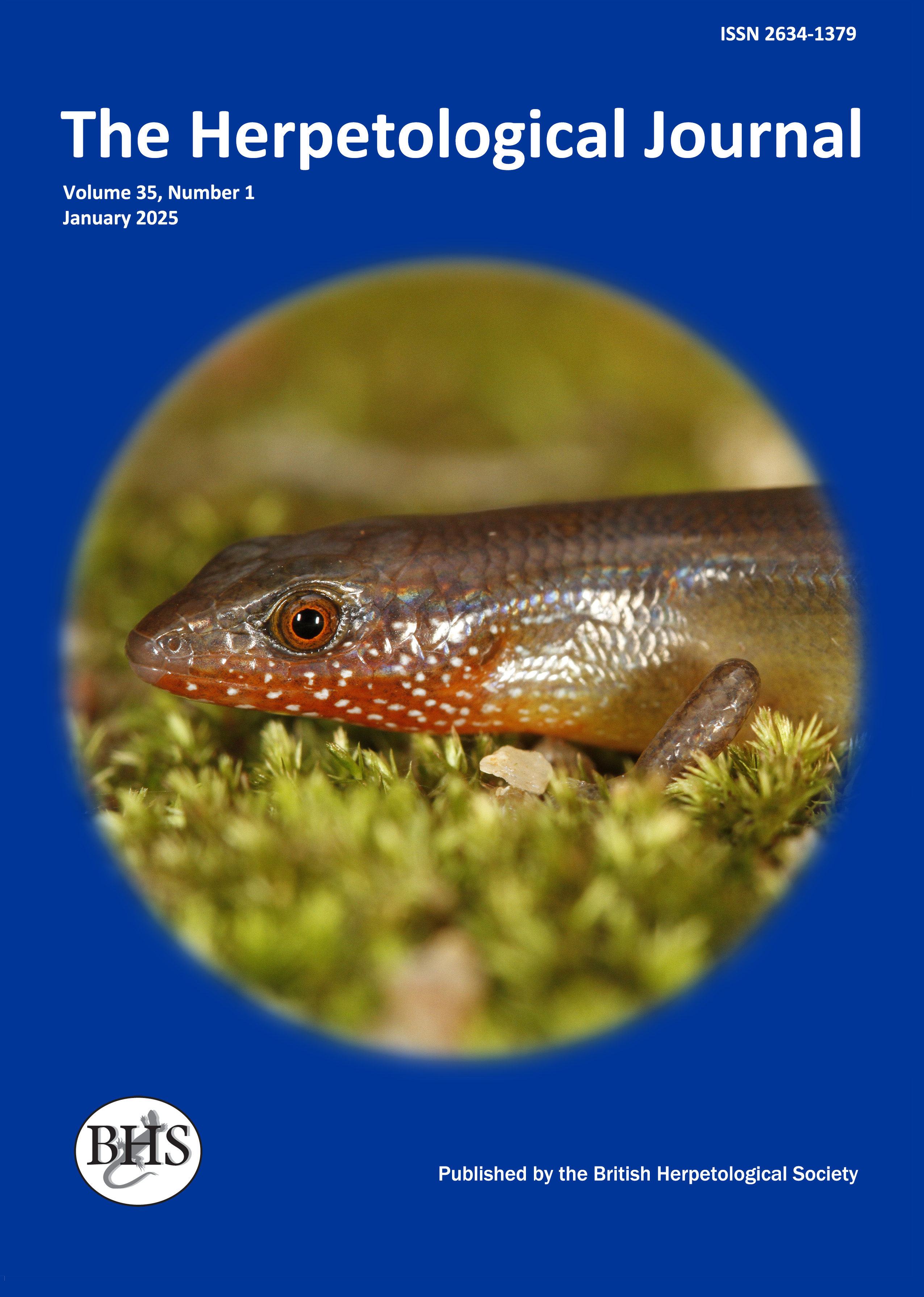
The Herpetological Journal
The Herpetological Journal is the Society's prestigious quarterly scientific journal. Articles are listed in Biological Abstracts, Current Awareness in Biological Sciences,Current Contents, Science Citation Index, and Zoological Record.
ISSN 0268-0130
2021 Impact Factor from Clarivate for the Herpetological Journal is 1.194, an increase of 0.332 from 2020.
pdf 01. Amphibian breeding site characteristics in the Western Carpathians, Poland
1355 downloads
Open Access
pp.41-51
Authors: Wieslaw Babik And Jan Rafnskl
Abstract: The status of amphibian populations in the eastern part of the Western Carpathians, Poland, was investigated by assessing the number and ecological characteristics of breeding sites. Breeding populations of Salamandra salamandra, Triturus cristatus, T. vulgaris, T. montandoni, T. vulgaris x T. montandoni hybrids, T. alpestris, Bombina variegata, Bufo bufo, Bufo viridis and Rana temporaria were found. A total of 171 breeding sites together with their surrounding terrestrial habitats were examined for 11 environmental habitat parameters and data on presence/ absence of other amphibians were recorded. A Canonical Correspondence Analysis (CCA) was performed to relate the species composition to the set of environmental variables. The first axis clearly differentiated S. salamandra from all other species, which were most clearly separated along the second axis. Th is second axis can be interpreted as a gradient of permanency and abundance of water vegetation. Generally, the CCA showed that environmental gradients were short, which reflects the limited range of habitats available for the amphibians in the area. G-tests revealed that two breeding assemblages could be distinguished. The first comprised newts of the genus Triturus, together with 8. variegata; the second assemblage was composed of Bufo bufo and R. temporaria. The number of breeding species at a site was positively correlated with the surface area, "clay pit" habitat type and depth, but negatively with the "oxbow" and "stream" habitat types. Some 84% of all breeding sites were of human origin, the majority of them being small, transient water bodies such as wheel-ruts and roadside ditches. To keep the amphibian abundance in the study area at the present level, continuous human activity in creating and maintaining such suitable sites is necessary.
Keywords: Amphibia, Triturus montandoni, breeding site, conservation, habitat choice, Western Carpathians

